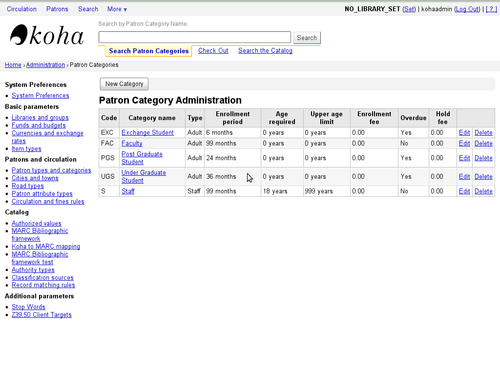We create a patron category for each group or class of patrons that has distinct characteristics or needs.
Patron categories are a very important part of Koha's circulation module.
You can find the Patron Category Administration screen in the Patrons and Circulation section in Koha's Administration module.

Unless your library is just starting up, you will already have your list of patron categories. However, you might consider modifying the list to take advantage of some of Koha's capabilities.
The key question here is do you have, or anticipate groups of patrons that have distinct characteristics. We need to assess if these groups are different in one or more of following ways:
Enrolment duration
Enrolment fee
Age restrictions
Loan periods
Maximum checkouts allowed
Fine amounts
Here are some examples for different types of libraries:
Public library: In a public library, these categories might be suitable:
Adult
Child
Student
Staff
Institution
Academic library...



